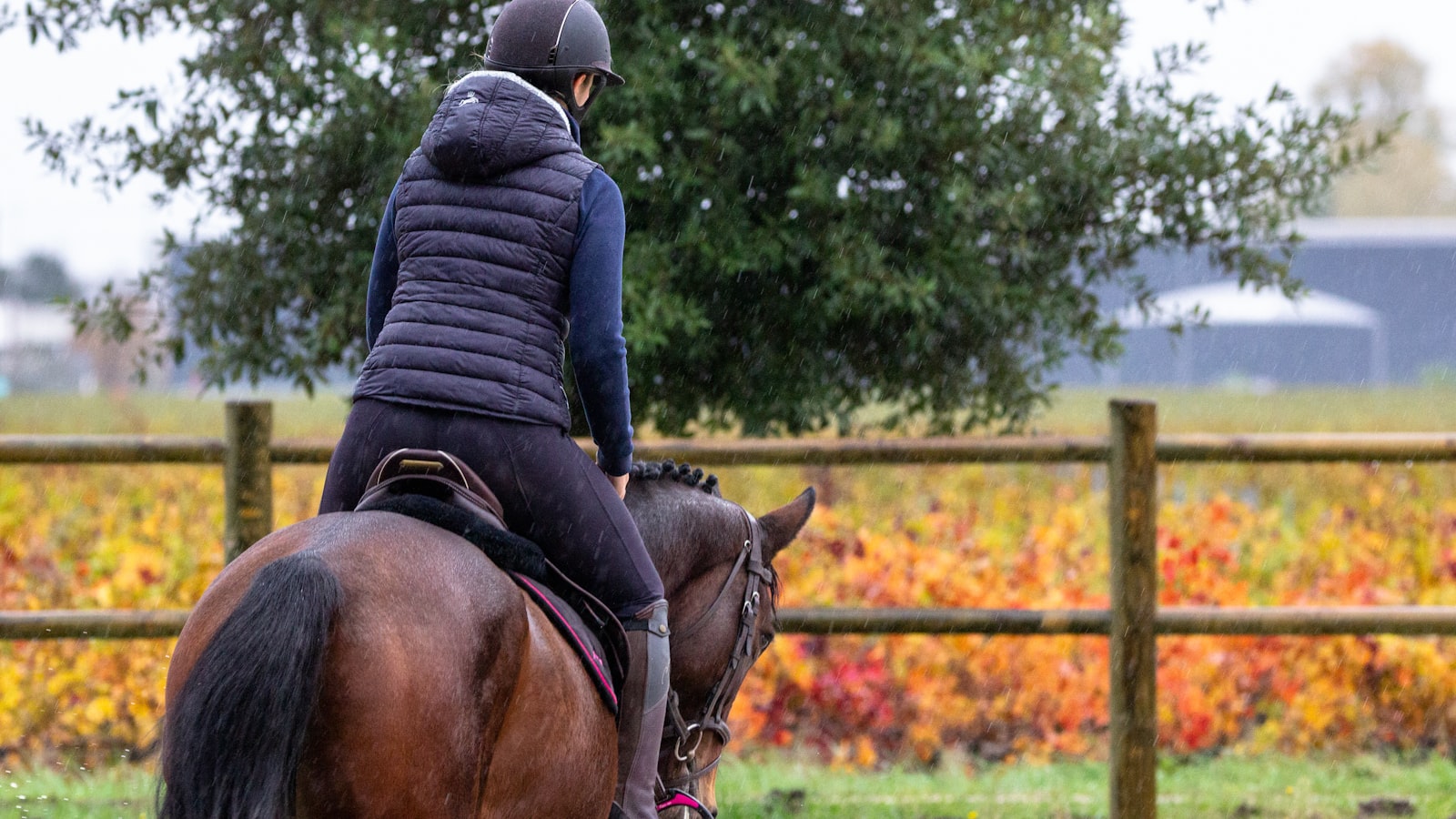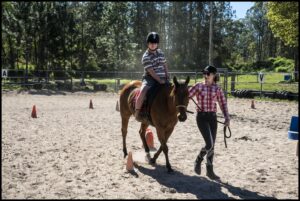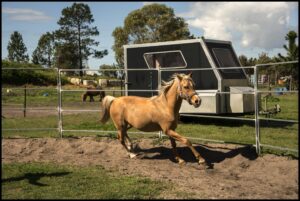Unbridle your curiosity as we embark on an exhilarating equestrian expedition, exploring the untamed realm of horse training techniques. A symphony of trust, respect, and connection awaits, as we delve deep into the artistry and science behind cultivating true equine mastery. With each prancing hoofbeat, we unlock the secrets to unlocking potential, traversing the path towards unparalleled success in the horse training arena. Unleash your inner trailblazer as we traverse uncharted territories of knowledge, seeking the proven techniques that stand at the pinnacle of achievement. Saddle up, fellow enthusiasts, for an unforgettable journey into the heart and soul of horse training excellence.
Understanding the Psychology of Horses: Key to Effective Training Methods
Discover Proven Horse Training Techniques for Success!
Understanding the psychology of horses is the key to effective training methods. By delving into the intricate workings of a horse’s mind, you can unlock their true potential and achieve remarkable results in your training sessions. When you grasp the underlying motivations and instincts that drive their behavior, you can tailor your techniques to suit their individual needs, creating a harmonious partnership based on trust and respect.
To successfully train a horse, it is crucial to establish a solid foundation of communication. Horses are highly perceptive animals that rely on body language and subtle cues to interpret the world around them. By honing your own ability to convey clear signals, you can establish a strong connection and build a language that transcends words. Whether it’s through gentle movements, precise timing, or consistent reinforcement, effective communication is the cornerstone of any successful training program.
Another essential aspect of horse training is understanding their herd mentality. Horses are social creatures that thrive in a structured hierarchy. By incorporating their natural instinct for herd dynamics into your training methods, you can tap into their willingness to cooperate and follow a leader. Utilizing techniques that establish you as the trusted leader of the herd, you can earn the horse’s respect and motivate them to willingly engage in the training process.
| Training Tip | Description |
|---|---|
| Positive Reinforcement | Reward desired behaviors with treats or praise. This method encourages horses to repeat the desired actions. |
| Desensitization | Gradually expose the horse to potentially scary objects or situations to help them overcome fear and build trust. |
| Consistency | Be consistent in your cues, commands, and expectations. Horses thrive on predictability and clear boundaries. |
Mastering Positive Reinforcement: Unraveling the Power behind Rewards
Being able to effectively train a horse is a skill that every equestrian aspires to master. And when it comes to horse training, positive reinforcement has proven to be an incredibly powerful tool. In this post, we will delve deep into the world of positive reinforcement and explore the techniques that can help you become a successful horse trainer.
One of the key aspects of mastering positive reinforcement is understanding the concept of rewards. Horses, like humans, respond well to praise and rewards. By using positive reinforcement techniques, you can create a strong bond of trust and respect with your horse. Offering treats, such as carrots or apples, can be a great way to reward your horse for good behavior. And don’t underestimate the power of verbal praise – a simple “good boy” or “well done” can go a long way in reinforcing positive behavior.
Another important technique in positive reinforcement horse training is clicker training. This method involves using a handheld clicker to mark desired behaviors, followed by a reward. The sound of the clicker becomes a signal that lets the horse know they have done something right. This technique allows for precise timing and communication with your horse, making it an effective tool in their training journey. By pairing the clicker sound with a reward, you can quickly teach your horse new commands and behaviors.
In addition to treats and clickers, another essential element of positive reinforcement training is consistency. Horses thrive on routine and stability, so it’s crucial to establish clear expectations and stick to them. Consistency in your training methods, cues, and rewards will help your horse understand what is expected of them. Remember, patience is key – building a strong foundation takes time and practice. Keep your training sessions short and enjoyable for both you and your horse, ensuring that they end on a positive note.
By mastering the art of positive reinforcement, you can unlock the full potential of your horse and lay the groundwork for a successful training journey. Remember to always stay patient, consistent, and kind in your approach. With these proven techniques in your toolkit, you’ll be well on your way to becoming a skilled horse trainer. So grab your treats, clicker, and saddle up – it’s time to embark on an adventure of training success!
Building Trust and Communication: Establishing a Strong Bond with Your Equine Partner
Discover Proven Horse Training Techniques for Success!
Effective horse training goes beyond simply teaching commands. It’s about forging a deep and meaningful connection with your equine partner, based on trust and clear communication. Investing time and effort into building this bond is essential for success in any equestrian discipline. Here, we share some proven techniques that will help you establish a strong bond with your horse, leading to a harmonious and rewarding partnership.
Consistency is Key
Consistency is the foundation of trust between you and your horse. By consistently reinforcing positive behaviors and using clear cues, you build a reliable framework for communication. Horses thrive on routine and predictability, so be sure to create consistent patterns in your training sessions to establish a sense of security and understanding. Consistency also applies to your body language and vocal cues – the clarity and consistency of your signals will help your horse better understand and respond to your instructions.
Listen and Observe
Listening to your horse and observing their reactions can provide valuable insights into their needs and emotions. Horses are naturally expressive animals, and by paying close attention to their body language, you can better understand their state of mind. Take note of subtle signs of relaxation, tension, or discomfort. By being attuned to your horse’s needs, you can respond appropriately and adjust your training methods accordingly. Remember, effective communication is a two-way street.
Positive Reinforcement
Using positive reinforcement, such as rewards or praise, can significantly strengthen the bond between you and your horse. When your equine partner correctly responds to your cues, offer them a treat, a gentle pat, or verbal praise. This positive association creates a sense of accomplishment and encourages your horse to continue behaving positively. However, it’s important to use positive reinforcement judiciously and avoid over-rewarding, as it can lead to spoiled behavior. Strike a balance and reward your horse for exceptional efforts or progress.
Table: Sample Weekly Training Schedule
| Day | Activity | Duration |
|---|---|---|
| Monday | Dressage Exercises | 30 minutes |
| Tuesday | Trail Ride | 1 hour |
| Wednesday | Groundwork and Liberty Exercises | 45 minutes |
| Thursday | Jumping Practice | 40 minutes |
| Friday | Rest Day | – |
| Saturday | Obstacle Training | 1 hour |
| Sunday | Free Play in Paddock | 1 hour |
Remember, building trust and communication with your equine partner takes time and patience. Each horse is unique, so adapt and tailor your training techniques to suit their individual needs. With consistency, attentive listening, and positive reinforcement, you’ll create a strong bond that will lead to incredible achievements and a lifelong partnership with your beloved horse.
Fine-tuning Your Training Regimen: Tailoring Techniques to Your Horse’s Individual Needs
Understanding Your Horse’s Unique Training Needs
Every horse is unique, just like humans. Hence, it’s essential to tailor your training regimen to meet your horse’s individual needs. By fine-tuning your approach, you can maximize your horse’s potential and achieve greater success in your training sessions. Here are some proven horse training techniques to help you customize your approach:
1. Assess your horse’s temperament:
Before jumping into specific training techniques, take the time to understand your horse’s temperament. Is your horse sensitive or bold? Does it thrive on challenges or prefer a calm environment? By recognizing these traits, you can adapt your training methods accordingly. For sensitive horses, a gentle and patient approach is necessary, while bolder horses may benefit from more assertive techniques.
2. Address individual strengths and weaknesses:
Just like us, horses have their own strengths and weaknesses. Identify what your horse excels in and focus on enhancing those skills. For instance, if your horse has a strong natural jumping ability, concentrate on developing its show jumping skills further. Similarly, if your horse struggles with lateral movements, incorporate exercises that target and improve its lateral flexibility.
3. Introduce variety in training:
Monotonous training routines can lead to boredom and disinterest in your horse. Spice up your sessions by introducing a variety of exercises. Incorporate ground poles, cavalettis, or cross-country jumps to keep your horse engaged and mentally stimulated. Additionally, make use of different training environments such as trails, arenas, or fields to expose your horse to different terrains and situations.
| Training Technique | Benefits |
|---|---|
| Clicker Training | Enhances communication and encourages positive behavior. |
| Desensitization | Builds confidence and reduces fear in potentially stressful situations. |
| Pattern Work | Improves focus and helps establish consistency in movements. |
Remember, effective training is a journey of continuous learning and adaptation. By tailoring your techniques to meet your horse’s individual needs, you’ll foster a stronger bond and achieve remarkable results together. Keep experimenting, stay patient, and above all, enjoy the rewarding process of training your exceptional equine partner!
As we bid farewell to this captivating journey into the realm of horse training techniques, it becomes evident that success lies within our grasp. Through the pages of this article, we have ventured deep into the heart of equestrian mastery, unearthing a treasure trove of proven methods that stand the test of time.
From the spirited harmony between horse and rider to the artistry of subtle cues, we have witnessed the enchantment that comes with understanding these magnificent creatures. Their power, grace, and willingness to connect with us have awed humans for centuries, and through these training techniques, we can embark on a path towards unrivaled triumph.
But let us not forget that true success in the equestrian world is not measured solely by ribbons won or trophies displayed. Rather, it resides in the transformation that takes place within ourselves as horse trainers. As we strive to develop a profound bond with these majestic beings, we too evolve as individuals, harnessing patience, empathy, and a deeper understanding of communication.
May this article serve as both a guide and an inspiration, igniting a flame of curiosity and ambition within each reader. As you embark on this remarkable journey of horse training, remember to approach it with an open mind and a willingness to constantly learn and adapt. For in the vast realm of equine education, there is always room for growth and discovery.
So, go forth, dear reader, equipped with the wisdom and insights shared within these pages. May the training techniques manifest into a symphony of accomplishments, resounding with the harmonious melody of triumph and the inherent joy that comes when horse and human dance in perfect unity.
Embrace this fervent pursuit, knowing that with dedication, patience, and perseverance, success will undoubtedly find its way to your training arena. The bond between you and your horse shall only grow stronger, as you both embark on a remarkable journey of endless possibilities.



